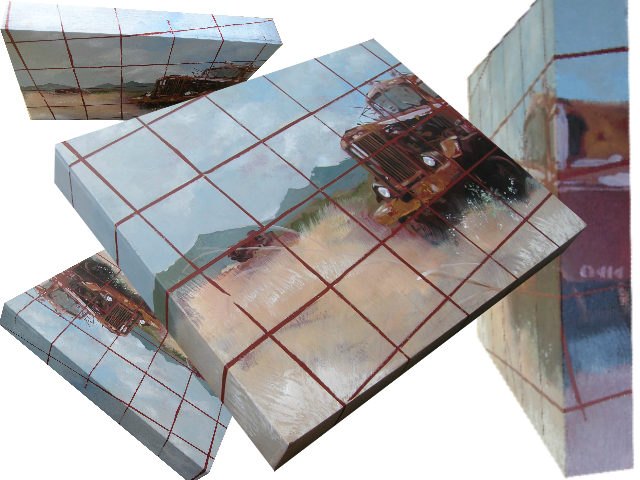This painting I did of a little girl building sand castles at Velzyland, on the north shore of Oahu, is a crowd favorite. I was inspired to do the piece because of her expression; she is on a mission, and in the words of someone who commented on this piece at a recent showing, “she has a look of happiness without smiling”. I thought that was lovely. Happiness without smiling. I suppose it’s this not-so-obvious emotion that is apparent as she carries out her little construction project.
The same viewer asked what she held in her hand. I explained it was the small shovel she was using, and he saw a paintbrush. The colors and background choices I had made were stylistic, but he thought that she was painting the place she wanted to be. Another lovely idea. That she was creating the place of her escape.
This got me thinking about the way people interpret art. The way it makes us feel. I had thought that art connected us in the common feelings that a piece evokes in us. But in this case, what connected me and this very thoughtful art viewer was that the piece made us both feel at all. The more we tried to explain it to each other the less it meant. It’s interesting how two people can look at something and see completely different things.
Take a better look at this painting.
In upcoming posts I will try to include the backstory on some of my work. It will be interesting to hear your take on it.







